Indigenous Governance Database
Governance
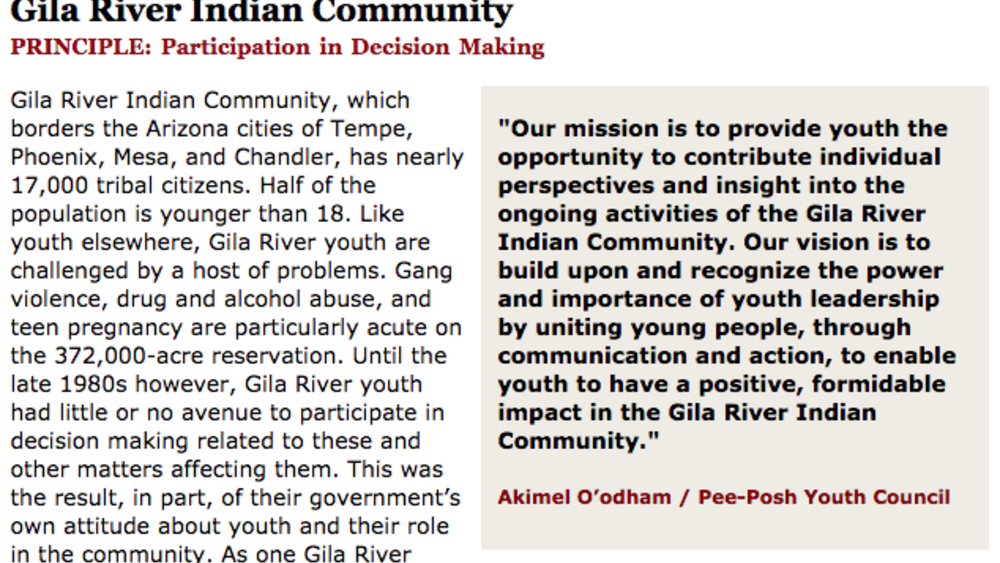
Best Practices Case Study (Participation in Decision Making): Gila River Indian Community
Gila River Indian Community, which borders the Arizona cities of Tempe, Phoenix, Mesa, and Chandler, has nearly 17,000 tribal citizens. Half of the population is younger than 18. Like youth elsewhere, Gila River youth are challenged by a host of problems. Gang violence, drug and alcohol abuse, and…
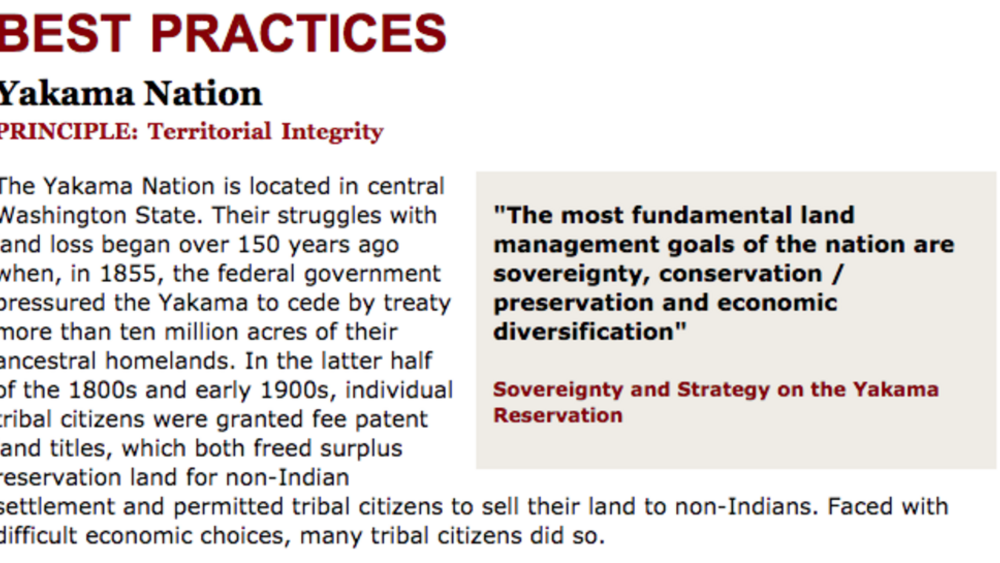
Best Practices Case Study (Territorial Integrity): Yakama Nation
The Yakama Nation is located in central Washington State. Their struggles with land loss began over 150 years ago when, in 1855, the federal government pressured the Yakama to cede by treaty more than ten million acres of their ancestral homelands. In the latter half of the 1800s and early 1900s,…
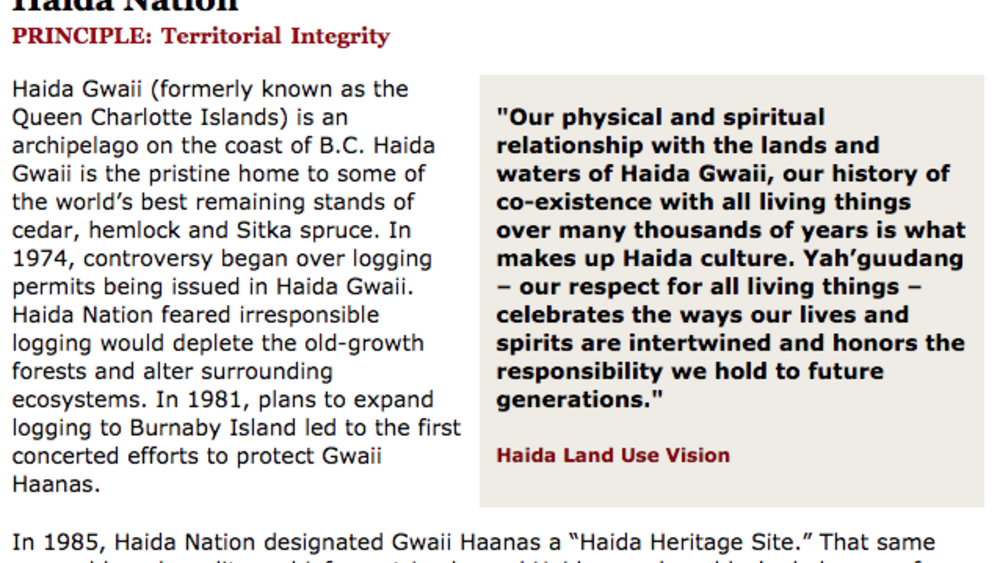
Best Practices Case Study (Territorial Integrity): Haida Nation
Haida Gwaii (formerly known as the Queen Charlotte Islands) is an archipelago on the coast of B.C. Haida Gwaii is the pristine home to some of the world's best remaining stands of cedar, hemlock and Sitka spruce. In 1974, controversy began over logging permits being issued in Haida Gwaii. Haida…
![Tribal Law as Indigenous Social Reality and Separate Consciousness: [Re]Incorporating Customs and Traditions into Tribal Law Tribal Law as Indigenous Social Reality and Separate Consciousness: [Re]Incorporating Customs and Traditions into Tribal Law](/sites/default/files/styles/resources/public/resources/Screen%2520Shot%25202016-10-11%2520at%25201.22.13%2520PM.png?itok=pvkjKhR1)
Tribal Law as Indigenous Social Reality and Separate Consciousness: [Re]Incorporating Customs and Traditions into Tribal Law
At some point in my legal career, I recall becoming increasingly uncomfortable with the inconsistencies between the values in the written law of various indigenous nations and the values I knew were embedded in indigenous societies themselves. The two are not entirely in harmony, and in fact, in…
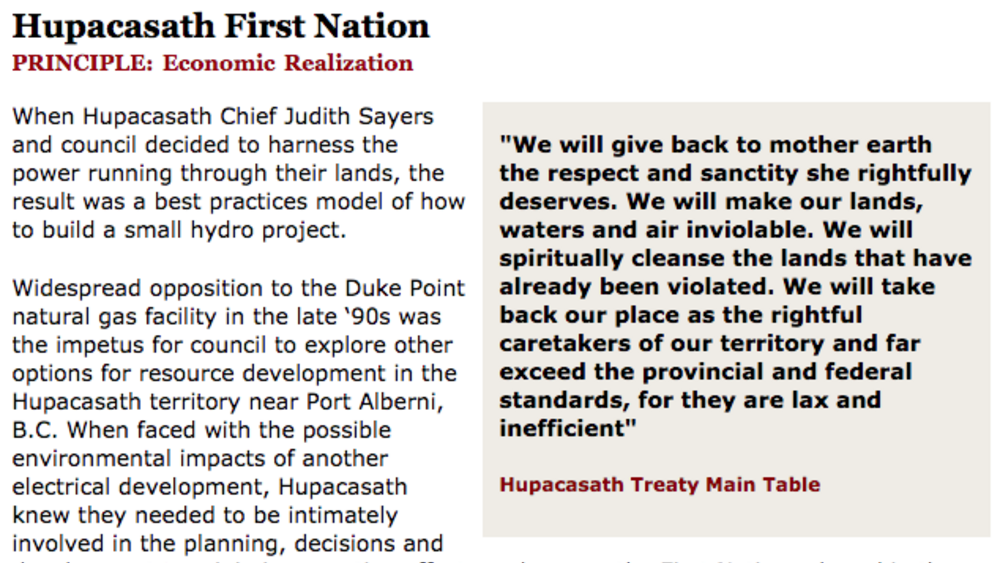
Best Practices Case Study (Economic Realization): Hupacasath First Nation
When Hupacasath Chief Judith Sayers and the council decided to harness the power running through their lands, the result was a best practices model of how to build a small hydro project. Widespread opposition to the Duke Point natural gas facility in the late '90s was the impetus for the council to…
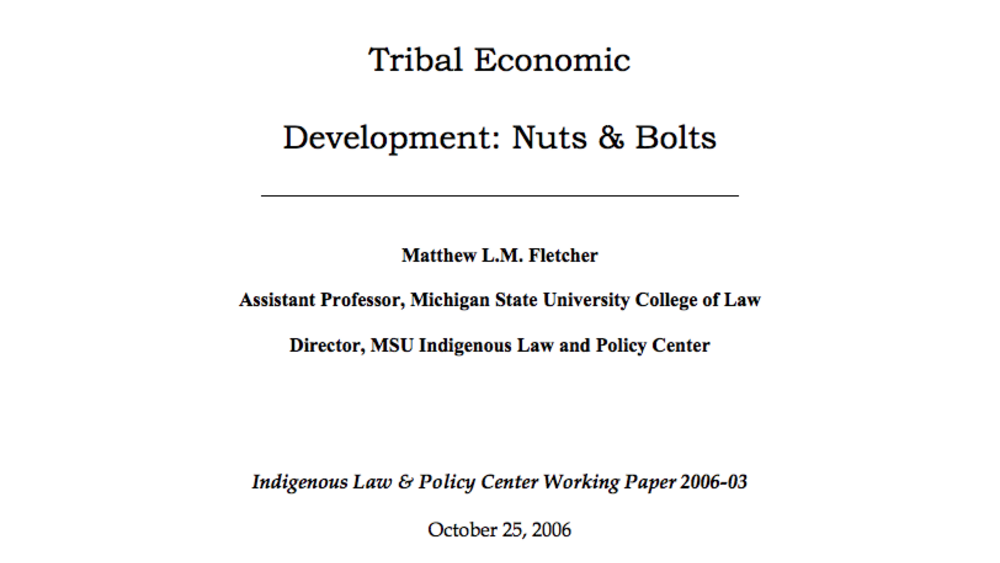
Tribal Economic Development: Nuts & Bolts
Tribal economic development is a product of the need for Indian tribes to generate revenue in order to pay for the provision of governmental services. Unlike the federal government or states, Indian tribes – in general – have no viable tax base from which to generate revenues sufficient to…
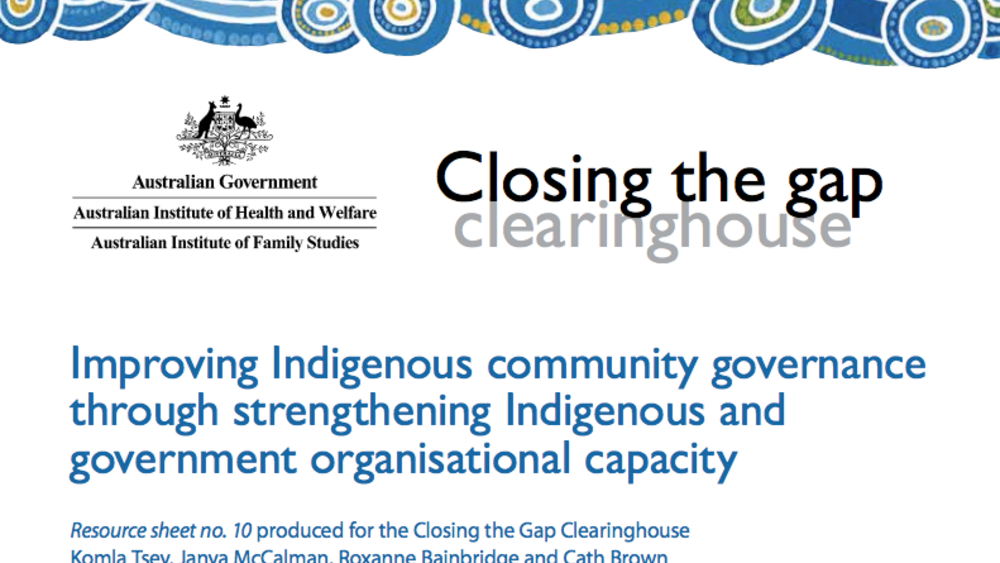
Improving Indigenous community governance through strengthening Indigenous and government organisational capacity
Strengthening the organisational capacity of both Indigenous and government organisations is critical to raising the health, wellbeing and prosperity of Indigenous Australian communities. Improving the governance processes of Indigenous organisations is likely to require strengthening of…
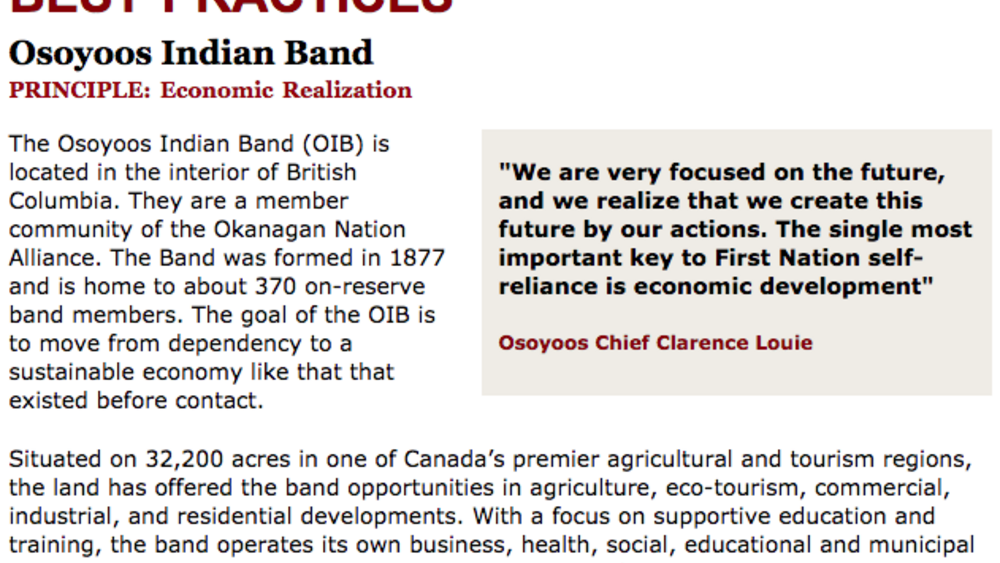
Best Practices Case Study (Economic Realization): Osoyoos Indian Band
The Osoyoos Indian Band (OIB) is located in the interior of British Columbia. They are a member community of the Okanagan Nation Alliance. The Band was formed in 1877 and is home to about 370 on-reserve band members. The goal of the OIB is to move from dependency to a sustainable economy like that…
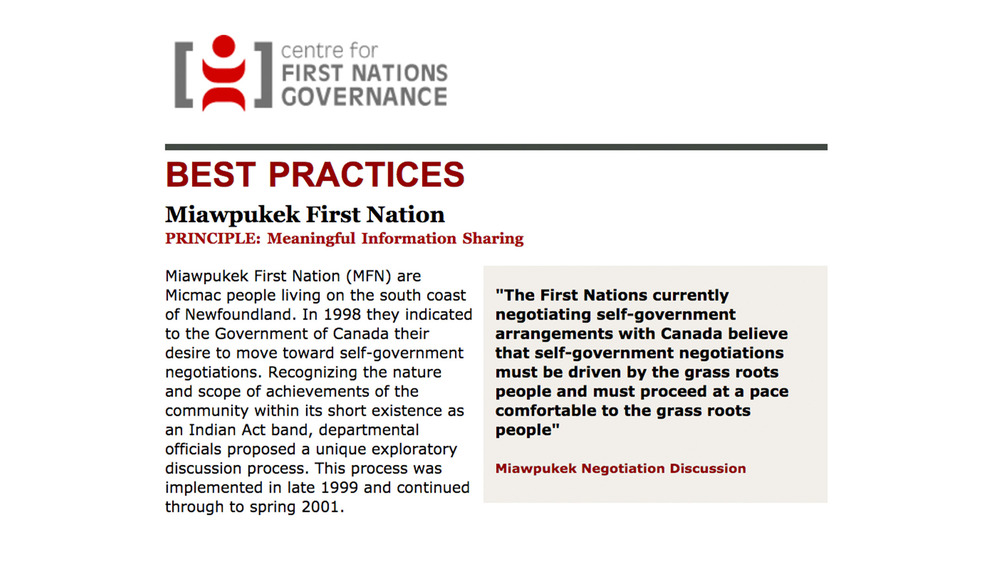
Best Practices Case Study (Meaningful Information Sharing): Miawpukek First Nation
Miawpukek First Nation (MFN) are Micmac people living on the south coast of Newfoundland. In 1998 they indicated to the Government of Canada their desire to move toward self-government negotiations. Recognizing the nature and scope of achievements of the community within its short existence as an…
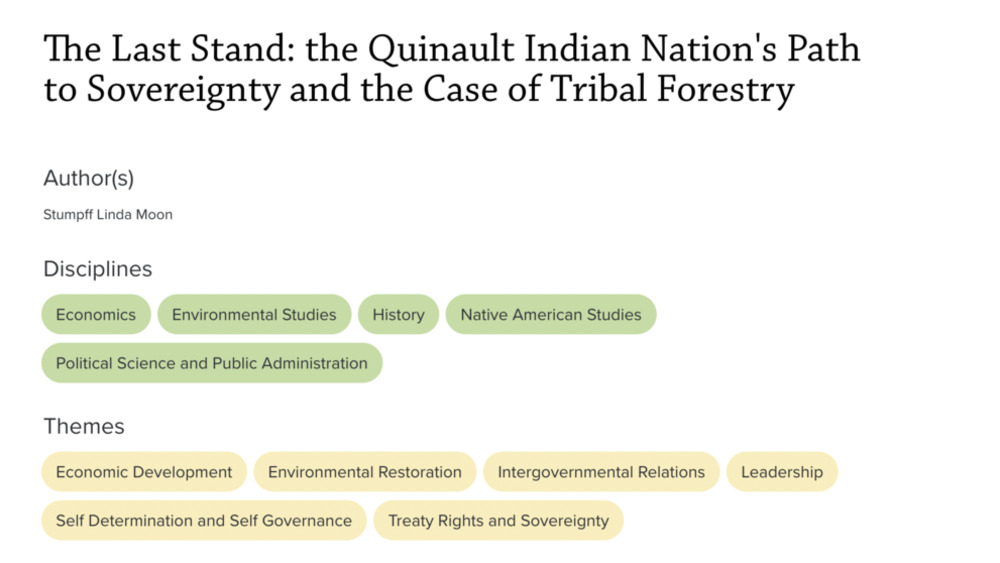
The Last Stand: the Quinault Indian Nation's Path to Sovereignty and the Case of Tribal Forestry
This case tells a story of forestry management policies on the Quinault Reservation. In the early years, the Office of Indian Affairs (OIA) and later the Bureau of Indian Affairs (BIA) acted like a landlord, allocating large timber sales to non-Indian timber companies. The Dawes Act fragmented the…
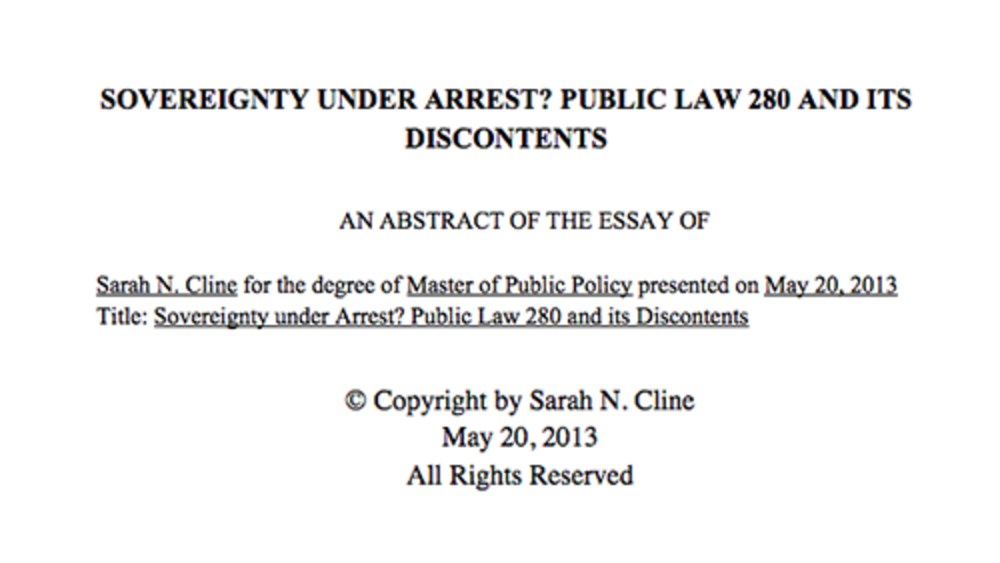
Sovereignty Under Arrest? Public Law 280 and Its Discontents
Law enforcement in Indian Country has been characterized as a maze of injustice, one in which offenders too easily escape and victims are too easily lost (Amnesty International, 2007). Tribal, state, and federal governments have recently sought to amend this through the passage of the Tribal Law…

The Peoples' Forest: Emerging Strategies on the Mescalero Apache Forest Reserves
This case raises questions about how American Indian Tribes reshape the care of forests on Indian lands by coordinating science-based forestry methodology and traditional ecological knowledge to meet their goals. Working the case, students are challenged to look for ways that the Mescalero Apache…
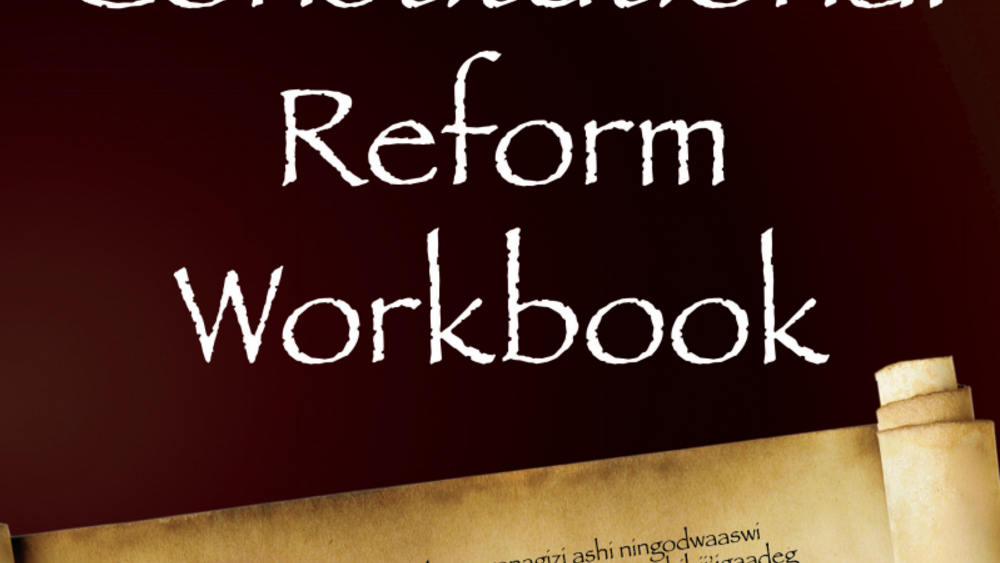
White Earth Nation Constitutional Reform Workbook
The core purpose of this Constitution is to take action and directly express, through that action, native cultural sovereignty. This workbook is designed to help the citizens of the White Earth Nation to understand their constitution. Through this effort and through your understanding of the…
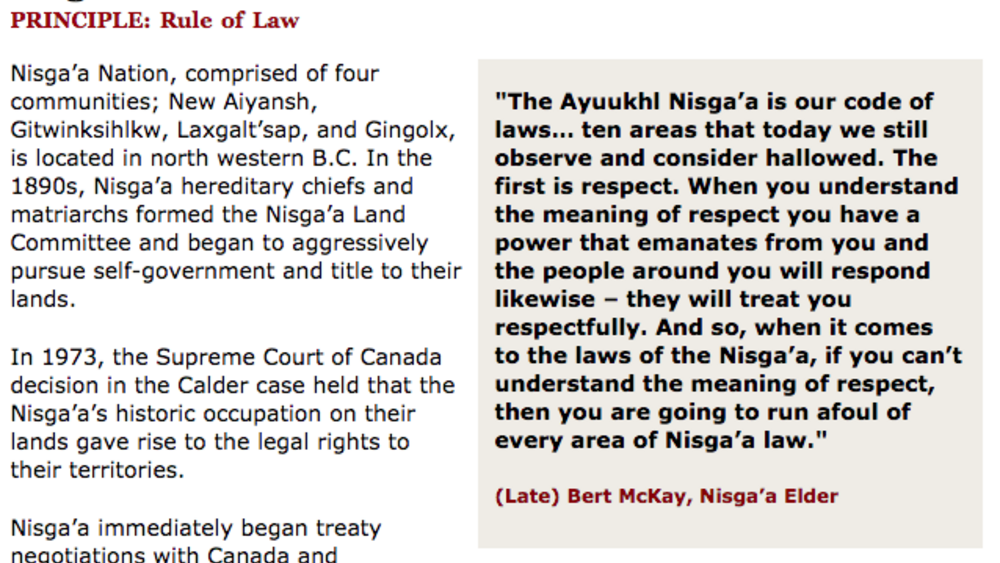
Best Practices Case Study (Rule of Law): Nisga'a Nation
Nisga'a Nation, comprised of four communities; New Aiyansh, Gitwinksihlkw, Laxgalt'sap, and Gingolx, is located in northwestern B.C. In the 1890s, Nisga'a hereditary chiefs and matriarchs formed the Nisga'a Land Committee and began to aggressively pursue self-government and title to their lands.…
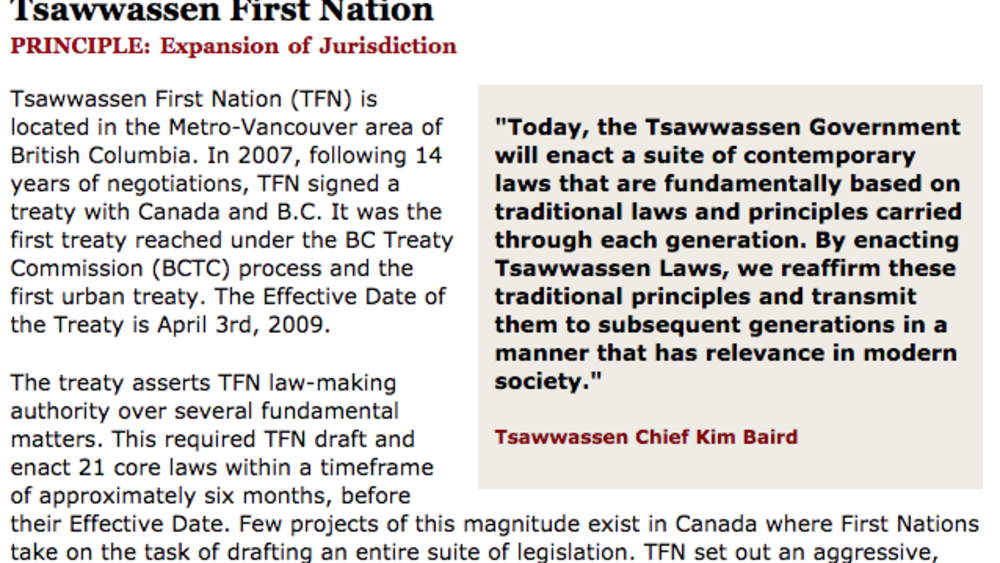
Best Practices Case Study (Expansion of Jurisdiction): Tsawwassen First Nation
Tsawwassen First Nation (TFN) is located in the Metro-Vancouver area of British Columbia. In 2007, following 14 years of negotiations, TFN signed a treaty with Canada and B.C. It was the first treaty reached under the BC Treaty Commission (BCTC) process and the first urban treaty. The Effective…
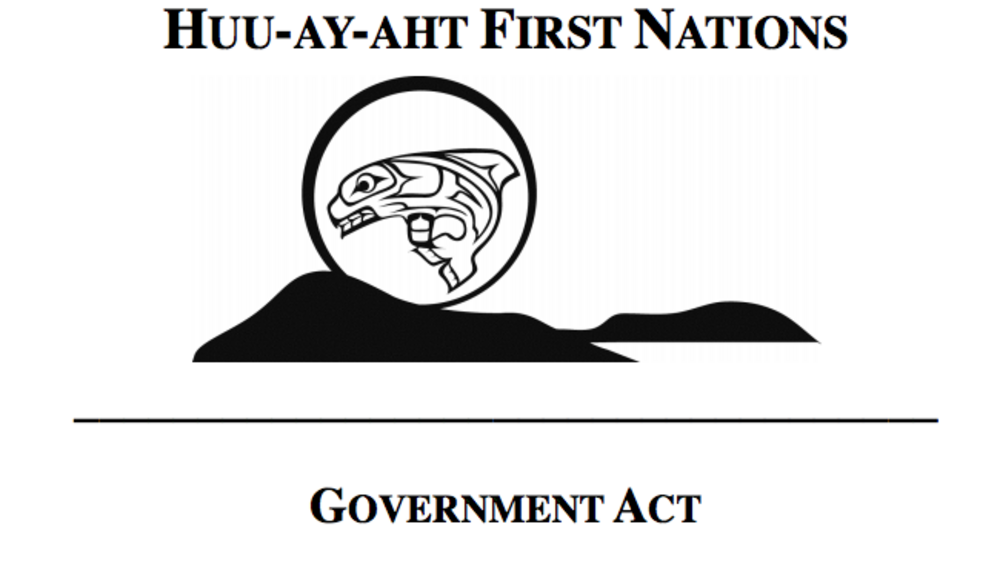
Huu-ay-aht First Nations Government Act
The Government Act sets out the legal framework for the Huu-ay-aht government which includes the following branches: the Legislature, Executive Council, the Ha’wiih Council, and the People’s Assembly.

Securing Our Futures
NCAI is releasing a Securing Our Futures report in conjunction with the 2013 State of Indian Nations. This report shows areas where tribes are exercising their sovereignty right now, diversifying their revenue base, and bringing economic success to their nations and surrounding communities. The…
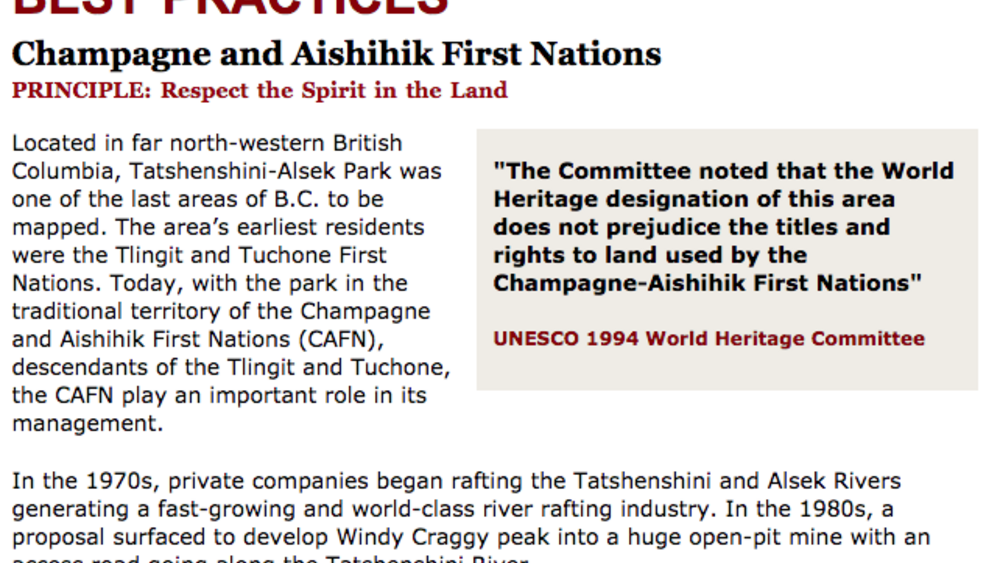
Best Practices Case Study (Respect the Spirit in the Land): Champagne and Aishihik First Nations
Located in far north-western British Columbia, Tatshenshini-Alsek Park was one of the last areas of B.C. to be mapped. The area's earliest residents were the Tlingit and Tuchone First Nations. Today, with the park in the traditional territory of the Champagne and Aishihik First Nations (CAFN),…
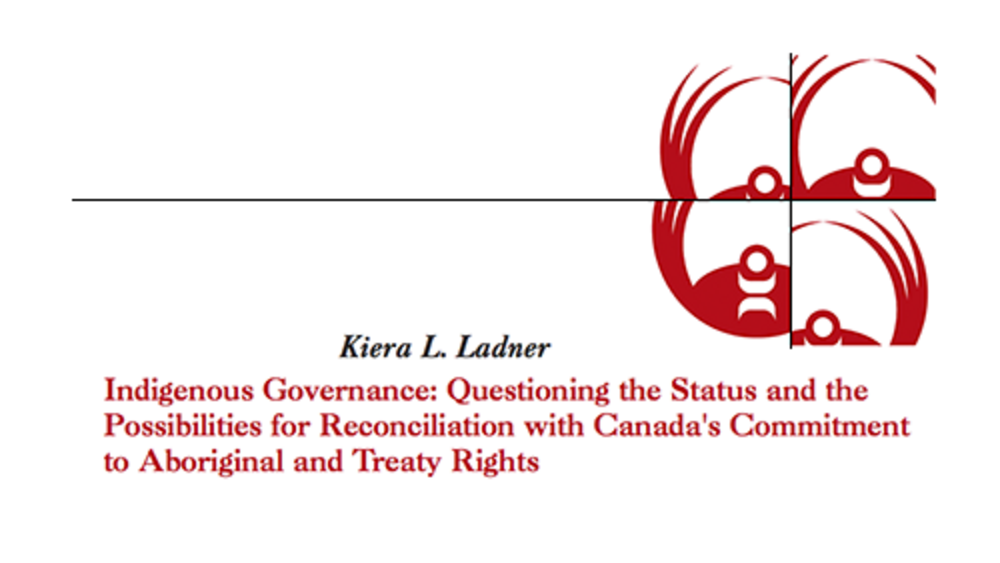
Indigenous Governance: Questioning the Status and the Possibilities for Reconciliation with Canada's Commitment to Aboriginal and Treaty Rights
Indigenous peoples have always had governance. This fact has been a matter of great debate among Canadian politicians and scholars for many years, but there is little doubt that Indigenous Nations had developed for themselves complex systems of government prior to colonization. The…

Like An Ill-Fitting Boot: Government, Governance and Management Systems in the Contemporary Indian Act
Few people are satisfied with the Indian Act, but no one will deny its importance. For the individuals to whom it applies, the Act is a basic and specific constitutional document. It defines their rights and entitlements, their citizenship and their relationship to the federal and provincial…
Pagination
- First page
- …
- 39
- 40
- 41
- …
- Last page
